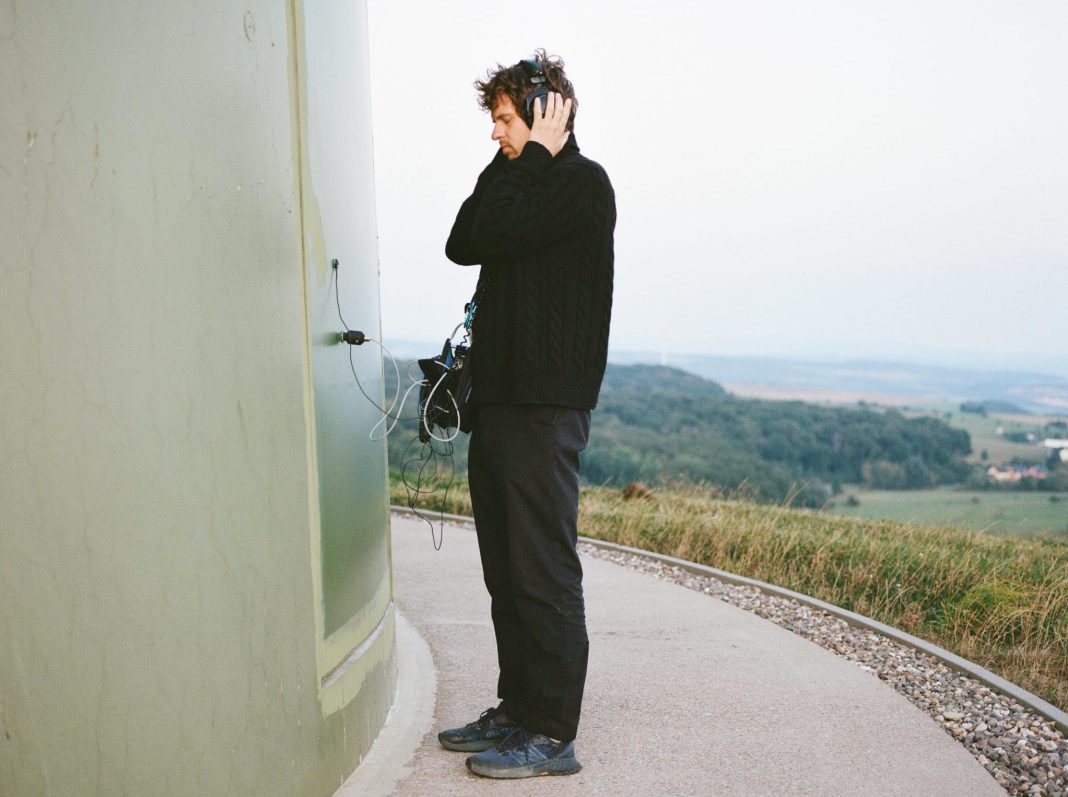Since its inception, the Venice Architecture Biennale has been a unique field of exploration where each nation offers an interpretation of our contemporary world through spatiality and its challenges.
The 19th edition, set to take place in 2025, revolves around the theme of “Intelligence”, focusing on ways to address the challenges posed by climate change. Within this framework, the Luxembourg Pavilion will present a bold and sensory-driven project. Designed by Valentin Bansac, Mike Fritsch, and Alice Loumeau, Sonic Investigations examines the role of sound in shaping our perception of space, in collaboration with composer Ludwig Berger and philosopher Peter Szendy. More than just an installation, it is an invitation to redefine our relationship with territory through attentive and engaged listening.
Complementary Backgrounds
The three architects and researchers leading the project share a transdisciplinary vision of architecture and landscape. Valentin Bansac, trained at OMA/AMO alongside Rem Koolhaas, is a photographer and lecturer at EPFL. Mike Fritsch, an architect and urban planner, teaches at ENSA-Marseille, where he explores the social interactions within territories. Alice Loumeau, a cartographer and researcher, conducts spatial investigations and has participated in residencies such as the Villa Albertine in the United States. Additionally, Bansac and Loumeau co-founded the collective MATTERS.xyz, which develops alternative narratives of territory through a sensitive and immersive approach.
“By erasing the image, we can reveal territorial dynamics that would otherwise remain imperceptible.”
A Unique Sound Immersion
This project draws inspiration from John Cage’s masterpiece, 4’33”, in which silence becomes a form of active listening, revealing the surrounding soundscape. “We wanted to invite visitors to detach from the visual to (re)discover space differently,” says Mike Fritsch.
In a world increasingly saturated with images, Sonic Investigations seeks to restore listening as a central and meaningful act. The installation, housed within the Arsenale in Venice, will take the form of an immersive soundscape designed by artist Ludwig Berger. Field recordings captured in Luxembourg—representing days of listening—will unveil the acoustic richness of a shifting territory: the hum of data centers, the rustling of forests, the sounds of digital infrastructures. Through a spatialized sound system, visitors will experience a sensory journey where every movement alters their perception.
The setup includes 24 strategically placed speakers, allowing the audience to navigate a range of sonic environments, from the whisper of insects to the roar of machines. “By erasing the image, we can reveal territorial dynamics that would otherwise remain imperceptible,” explains Valentin Bansac.
From Research to Publication
Beyond the installation, the project is accompanied by a publication, Écotones: Investigating Sounds and Territories, edited by Peter Szendy and published by Spector Books. More than just an exhibition catalog, the book extends the theoretical foundations of the project. Featuring 16 contributions from philosophers, architects, and sound artists, it explores sound as a tool for perception and spatial analysis. Divided into three sections—theoretical essays, case studies, and fictional texts—it examines how listening can become a political and critical act. “We wanted to go beyond studying sound as a mere sensory element and instead use it as a true analytical tool for understanding territory,” emphasizes Mike Fritsch.
“We genuinely hope it will have a life beyond the Biennale.”
An Evolving and Committed Project
“The sound piece is the heart of the project, but everything surrounding it has evolved over time,” explains Alice Loumeau. The field recordings, created in collaboration with Ludwig Berger, utilized various types of microphones to capture multiple perspectives. This process revealed the complex sonic fabric of Luxembourg, from natural ecosystems to technological infrastructures.
The installation relies on a 24-speaker immersive setup, broadcasting a range of sounds from the hum of data centers to silences symbolizing biodiversity loss. “Listening becomes a way of perceiving space differently, giving voice to invisible or neglected elements,” adds Valentin Bansac.
Expanding on this concept, Sonic Investigations offers a critical approach to urban planning and territorial design. The project is rooted in the concept of “Écotone”, the transition zone between two ecosystems, to explore liminal spaces and the interactions between nature and human interventions.
The installation will not be confined to Venice. “We genuinely hope it will have a life beyond the Biennale,” says Valentin Bansac. A series of activations will accompany the event, including a short residency with Gaia Ginevra Giorgi, culminating in a performance within the immersive pavilion, as well as a sound walk across the Venetian Lagoon, guided by Nicola Di Croce. These events will create a dialogue between the artwork and the local soundscape, extending the project beyond its exhibition space.
From Research to Publication
Beyond its physical installation, Sonic Investigations serves as a catalyst for larger discussions on sound as a tool for spatial inquiry and resistance. The project proposes listening as a means to redefine and challenge existing paradigms in urban planning and architecture.
With a strong legacy at the Venice Biennale, Luxembourg continues to push the boundaries of architectural practice. Sonic Investigations offers a bold exploration into the untapped potential of sound, reaffirming its power in shaping the way we experience, understand, and interact with space. At a time when the built environment faces urgent challenges due to climate change, listening—both as a method and a mindset—emerges as a potent instrument for both analysis and activism.
This article was published in the 5th edition of Forbes Luxembourg magazine.

